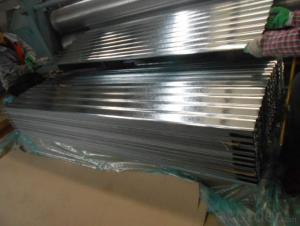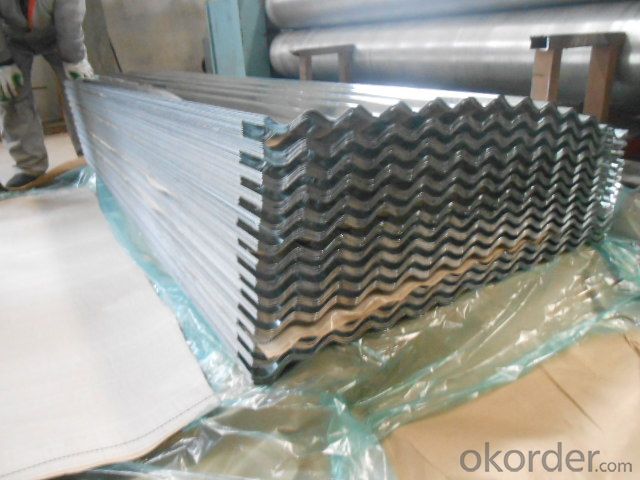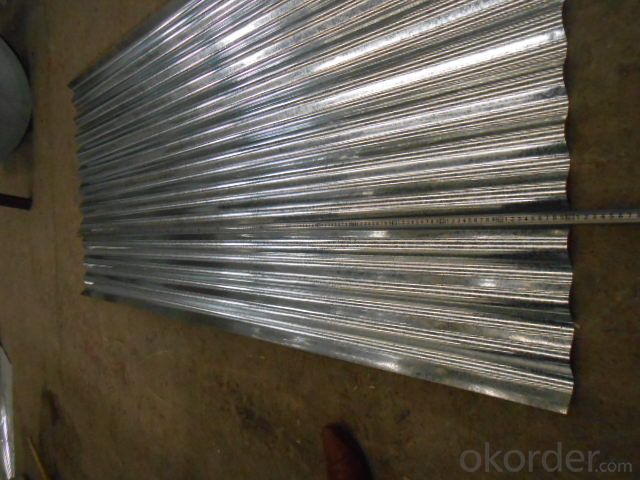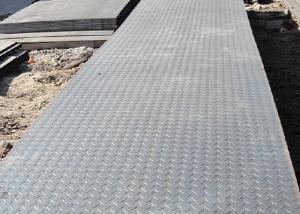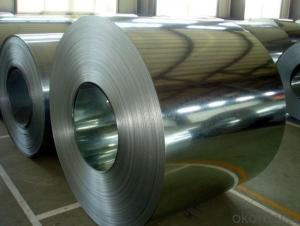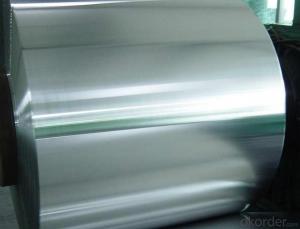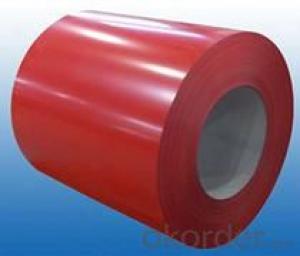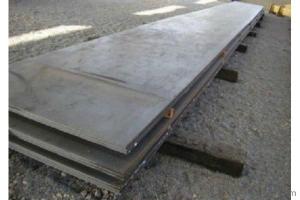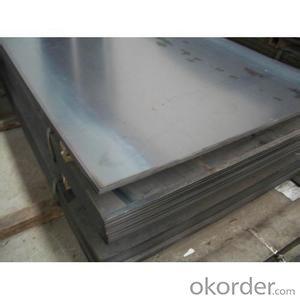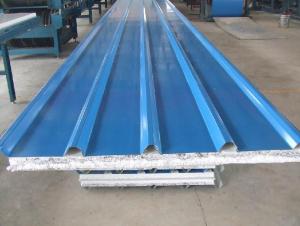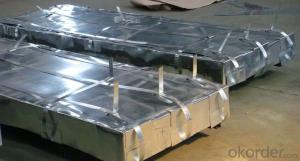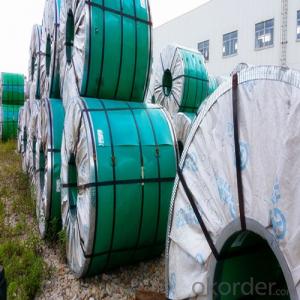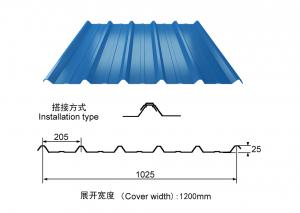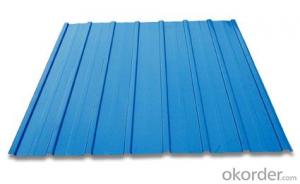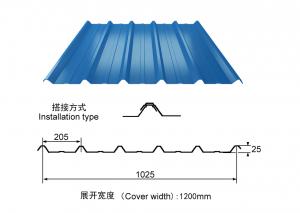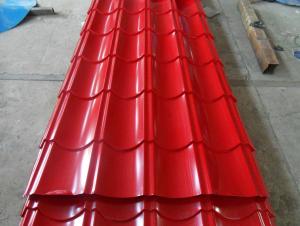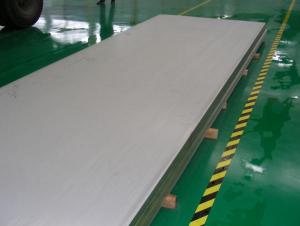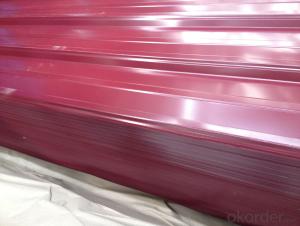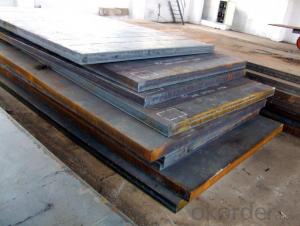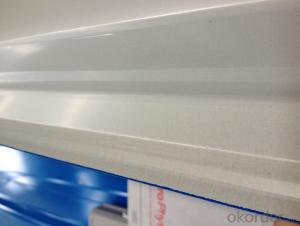CORRUGATED STEEL SHEET
- Loading Port:
- China Main Port
- Payment Terms:
- TT OR LC
- Min Order Qty:
- -
- Supply Capability:
- -
OKorder Service Pledge
OKorder Financial Service
You Might Also Like
CORRUGATED STEEL SHEET
Corrugated steel sheets is the colored steel plate which has been wave formed with the cold rolling treatment, trough especial coated dispose, the color coated steel panel’s guaranty is 12-15 years.
Pressing steel panel with the clear line, and many colors for choice, suitable for any different building style materials, achieving satisfy effects;
Pressing steel panel can be freely incised, it can satisfy the especially designing demands. It apply on convenient construction, and anti-seismic performance, fire proof, waterproof, free of maintenance, ect.
It has been widely applied on civil construction like storerooms, special building roof and walls of wide-span steel structure building and so on.
STEEL GRADE & STANDARD:JIS G3302 SGCC
ZINC COATING MASS:Z40(+/-10g)
SIZE:0.2*900*2000MM
PACKAGE TYPE:PACKED WITH STEEL PALLET
BUNDLE WEIGHT:AROUND 3MT
- Q: How are steel sheets protected during cutting and fabrication?
- Steel sheets are protected during cutting and fabrication through various methods such as using protective coatings, applying lubricants, and utilizing automated cutting technologies. These measures help prevent corrosion, reduce friction, and ensure precise and efficient cutting without compromising the quality and integrity of the steel sheets.
- Q: Can steel sheets be used in the electronics industry?
- Yes, steel sheets can be used in the electronics industry. While electronic devices are typically made with materials such as plastic and aluminum, steel sheets can still play a role in the manufacturing process. Steel sheets are commonly used to create structural components, enclosures, brackets, and other parts in electronic devices. They provide strength, durability, and protection for delicate electronic components. Steel sheets are also used for shielding purposes to prevent electromagnetic interference (EMI) in electronic equipment. Overall, steel sheets have several applications in the electronics industry, making them a viable material choice for certain components and enclosures.
- Q: Can steel sheets be used for food processing applications?
- Yes, steel sheets can be used for food processing applications. Steel is a durable and hygienic material that can withstand high temperatures and harsh cleaning processes. It is commonly used for food processing equipment, such as work surfaces, countertops, and food storage containers.
- Q: What are the different types of coatings available for steel sheets?
- There are several different types of coatings available for steel sheets, including galvanized coatings, zinc coatings, aluminum coatings, and organic coatings.
- Q: Are steel sheets suitable for aerospace applications?
- Indeed, steel sheets prove to be a suitable option for aerospace applications. Renowned for its remarkable strength and durability, steel emerges as an outstanding preference for aircraft structural components. Its capacity to withstand impact and fatigue proves pivotal in the aerospace sector. Moreover, steel sheets can be effortlessly molded and joined through welding, facilitating the crafting of intricate forms and structures. Nevertheless, it is crucial to emphasize the meticulous selection of the precise steel type and composition to satisfy the distinctive needs of the aerospace industry, encompassing weight reduction and corrosion resistance.
- Q: Can the steel sheets be used for metal stamping?
- Indeed, metal stamping can make use of steel sheets. Steel, renowned for its robustness and potency, is frequently employed as a material in metal stamping procedures. Generally, steel sheets are sliced into precise dimensions and shapes before being subjected to the stamping process, wherein a die and punch set are utilized to fashion the desired form onto the steel sheet. This technique enables the production of a diverse array of items, including automotive parts, household appliances, and industrial components.
- Q: Can steel sheets be used in HVAC applications?
- Yes, steel sheets can be used in HVAC applications. They are commonly used for ductwork, air handling units, and other components in HVAC systems due to their strength, durability, and ability to withstand high temperatures.
- Q: Are steel sheets resistant to electromagnetic interference?
- Yes, steel sheets are generally resistant to electromagnetic interference due to their high electrical conductivity and ability to block external electromagnetic fields.
- Q: Can steel sheets be recycled after their useful life?
- Yes, steel sheets can be easily recycled after their useful life. Steel is one of the most recyclable materials in the world and can be melted down and reused multiple times without losing its properties. Recycling steel sheets not only reduces the need for new steel production but also conserves resources and reduces energy consumption and greenhouse gas emissions.
- Q: How do steel sheets handle thermal conductivity?
- Steel sheets have high thermal conductivity, which means they can efficiently transfer heat. This property allows steel sheets to quickly and evenly distribute heat across their surface, making them suitable for various applications such as heat transfer systems, cookware, and building materials.
Send your message to us
CORRUGATED STEEL SHEET
- Loading Port:
- China Main Port
- Payment Terms:
- TT OR LC
- Min Order Qty:
- -
- Supply Capability:
- -
OKorder Service Pledge
OKorder Financial Service
Similar products
Hot products
Hot Searches
Related keywords
